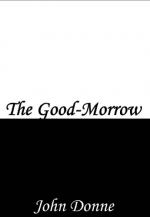
|
| Name: _________________________ | Period: ___________________ |
This test consists of 5 multiple choice questions, 5 short answer questions, and 8 short essay questions.
Multiple Choice Questions
1. Which technique is used repeatedly in the first quatrain?
(a) Paradox.
(b) Appeal to Ethos.
(c) Understatement.
(d) Rhetorical question.
2. What kind of fear is the speaker referring to in line 9?
(a) Fear of the beloved's disapproval.
(b) An existential fear of purposelessness and loss of meaning.
(c) Jealousy and insecurity about the relationship.
(d) Fear of loneliness and despair.
3. In lines 2 and 3, what does the speaker compare himself and his lover to, before their relationship began?
(a) Inanimate objects.
(b) Babies.
(c) Animals.
(d) Farmers.
4. What is the dominant meter of this poem?
(a) Trochaic pentameter.
(b) Trochaic hexameter.
(c) Iambic pentameter.
(d) Iambic hexameter.
5. Lines 12-14, "Let sea-discoverers to new worlds have gone,/ Let maps to other, worlds on worlds have shown,/ Let us possess one world, each hath one, and is one," contain an example of which technique?
(a) Cacophony.
(b) Onomatopoeia.
(c) Anaphora.
(d) Antimetabole.
Short Answer Questions
1. What does the speaker say is "waking" in line 8?
2. What is the literal meaning of the poem's title?
3. Which term describes the use of the word "beauty" in line 6?
4. What is different about the poem's first two and last two lines?
5. Which techniques are seen in line 15, "My face in thine eye, thine in mine appears"?
Short Essay Questions
1. Describe the structure of this poem.
2. Explain the rhetorical purpose of the image that begins the third stanza.
3. Explain how the conceit of exploration is incorporated into the speaker's argument in stanza two.
4. Explain the poem's allusion to the Seven Sleepers.
5. What element of hyperbole is contained in the poem's allusion to the Seven Sleepers?
6. Explain how the conceit of dreaming unifies the first stanza.
7. Where is this poem set, and what is happening there?
8. Explain the poem's final conceit about the hemispheres of a planet.
|
This section contains 854 words (approx. 3 pages at 300 words per page) |

|




